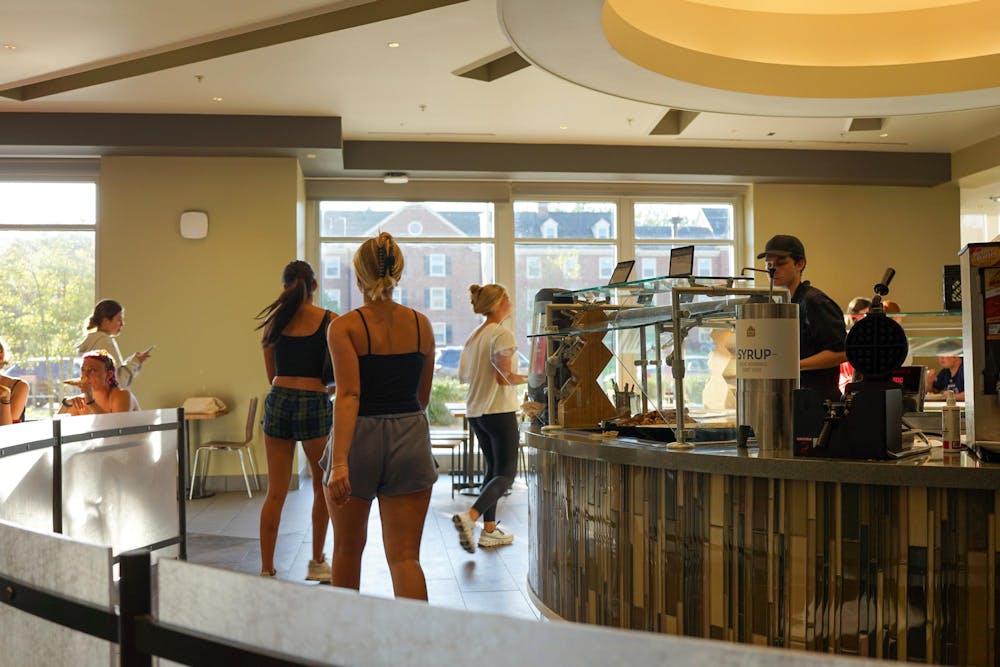This isn’t another Miami University dining hate piece: I actually think Miami does a good job with its food variety and quality, given the budgetary, personnel and time constraints.
While it has definitely made some questionable food at times, it’s always possible to find an edible and nutritious meal at the dining hall. No, it’s not what we’re used to at home, but these establishments feed thousands of people per day, and that in itself is a gargantuan task.
That being said, there are some structural changes Miami could adopt to make eating at school a little less painful.
First, we need to-go containers. When I only have a few minutes to grab food before my next class, I don’t always want Bell Tower or a weirdly dry, boxed sandwich from Emporium. If we could use a meal swipe to check out a to-go container, fill it with food from the dining hall and take it with us, we would have infinitely more choices for food on those days when there’s just not enough time for a sit-down meal.
We should also be able to use our meal swipes at more places than just the dining halls. The diplomat standard meal plan for the 2025-26 cohort costs $3,280 and provides $500 of dining dollars, 16 swipes per week for 17 weeks (16 weeks of the semester, plus an extra week’s worth of swipes) and five guest swipes. After crunching some numbers, this means that a diplomat standard meal swipe is valued at approximately $10.
Miami should partner with local businesses to allow students to purchase $10 worth of food at those locations for one meal swipe, or to allow students to use dining dollars to purchase meals. At the very least, the restaurants in Armstrong Student Center, like Panera – and the long-awaited Chick-fil-A – should have a meal swipe menu.
We should also be able to trade meal swipes in for snacks. I have the diplomat minimum meal plan, which means I only have $100 dining dollars per semester – an average allowance of $6.25 per week, which is equivalent to approximately one Celsius and a bag of gummy worms from the vending machines. I would gladly trade in a meal swipe or two for $10 worth of snacks at Emporium.
These suggestions were inspired by the two other university campuses I’ve visited the most: Case Western Reserve University (CWRU) and Ohio University (OU).
Both CWRU and OU allow its students to use takeout boxes in their dining halls. At CWRU, you check out a container like it’s a library book: scan your ID, take the container and return it within two days. The system is included in the dining plans for free, unless the student fails to return the container within 48 hours, in which case they are charged a fee.
At OU, students purchase a to-go box for $5, and return it when they’re done. Upon returning the box, they receive a new box or a key tag that can be redeemed for a to-go box at a later date. Assuming the student doesn’t lose any boxes or key tags, the whole system can be accessed for a one-time purchase of $5.
OU students can also get a Flex meal plan and spend one meal swipe for $6.75 worth of items at any campus market. This means they can purchase toiletries, snacks and other goods with their meal swipes.
At CWRU, vendors on campus, such as Subway and Dunkin’ Donuts, take “portable” and “grab & go” swipes, allowing students to purchase from a set menu using meal swipes included in their dining plans. There are also a number of off-campus locations that accept Case Cash (their version of dining dollars), meaning students can use their meal plan to support local businesses.
Enjoy what you're reading?
Signup for our newsletter
By increasing the places students can use their meal plans, and allowing students to take dining hall food on-the-go, Miami will allow for a greater diversity of food options, without actually expanding its offerings. This could help cut back on some of that dining-hall-food fatigue. I would be much more excited to eat on campus if I could trade a meal swipe in for some Panera mac and cheese.
Eliza Sullivan is a second year double majoring in diplomacy and global politics and Russian, Eastern European and Eurasian studies. She writes for the opinion section of The Miami Student. She is also involved with Model Arab League and Miami University College Democrats.




